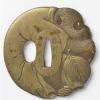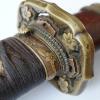Leaderboard
Popular Content
Showing content with the highest reputation on 12/18/2020 in all areas
-
Steve, you are always amazing. I am still unsure about the …雅… part. But my guess is as follows. 古雅掬すべし (koga kikusubeshi) – should feel the classical grace5 points
-
There is some kind of answer for that. "Here .is the South German sax from 600 AD - 750 AD before and after Japanese polishing from Stefan Maeder's Ph.D. thesis. See also this module. There is a clear hamon and since it is not parallel to the blade there might have been a clay coating. On the other hand, the wavyness of the hamon may just be due to thickness variations of the blade." https://www.tf.uni-kiel.de/matwis/amat/iss/kap_b/illustr/ib_6_2.html#_6a3 points
-
Many years ago I was fortunate to find a near complete wakizashi in style similar to that described by Steve and commented upon by Ian. I've knocked up a document describing the koshirae, which please find attached. On the specification Steve noted rounded ends for wakizashi, which as I understand is also a specification for the -sho of a daisho. This wakizashi has a squared end with the horn kojiri made to match the horn kashira. Also, the binding goes through the horn kashira in the usual style rather than over the top as for formal wear. So I'm not sure whether this is a koshirae for official "service", for wear inside the home, or for a merchant to wear. Perhaps the elaborate appearance of the saya lacquer imitating woodgrain would suggest this is not a formal koshirae, but rather for a non-samurai to wear?? BaZZa. Norimitsu wakizashi details.doc2 points
-
You need to take good care of that one. It's of little interest to traditional Japanese sword collectors, but of huge interest to Japanese military sword guys. RARE and quite valuable. By now you'll have a bunch of pm's offering to buy it2 points
-
2 points
-
I had to make one change - from bamboo to clove. Lines 5 and 6 are one sentence, so without knowing that one kanji I am only guessing at the meaning. "Additional Notes: the layout of the design, the thickness, and the plum blossoms, make the item described on the right an elegant work." On this hakogaki, and many others like it, Torigoye refers to this tsuba as "the right" (右). This just means "the item described on the right". In other words, the item herein. I can't read the kanji following 雅. It sort of looks like 掏, but that kanji doesn't combine with 雅 to form anything, and it doesn't seem to make sense in this context. I could be mistaken about 雅, but that still doesn't help me figure out the next kanji. Given Torigoye's other hakogaki, where he often finishes with some complimentary comment about "the tsuba just described herein", I think this lid is no different. 雅 by itself means elegance and refinement, and I think its use here suggests he feels this tsuba is an elegant work.2 points
-
Thanks Ray.👍 I posted it on Facebook « Nihonto Group » and got within 12 hours 5 positive answers, all willing to buy it at once 😃2 points
-
2 points
-
Man, those are some really great photos! I noticed in the middle one that his sarute is gone. Just adds another layer of depth to the stories of the gunto we see in the collecting world.1 point
-
Thomas This is not for the Chinese Type 65. Not only becauseT65 has two rings of the leather piece on the scabbard, the one I showed has one ring on the leather piece, and it has an open space that allows the ring on the scabbard to go through. Also, the leather parts are too big for T65 and T32. Here is the photo of T65's.PLA might have copied the design of Type 95's hanger though.1 point
-
1 point
-
1 point
-
Thank you so much again !! I just started collecting Japan's edged weapons. I have been collecting German trench knives for 20 years. And only recently fell in love with Japan)!1 point
-
Alex, I don't know which Nobuyoshi this is. From the small bit I can see this looks like this might be a Muromachi blade. https://nihontoclub.com/view/smiths/meisearch?order=field_smith_start_era_value&sort=asc&type=All&mei_op=contains&mei=信吉1 point
-
1 point
-
Nikki, In non-nohintoese that means the hardened edge, the point and activity above the whitish area at the edge but below the ridge that runs the length of the blade.1 point
-
Since noone said it... About the stamp on the "other side", you can find more information in Bruce's great reference doc here ( More specifically: It would be great if you could show close-up pictures of the hamon, kissaki and hada. Edit: You can read more about that famous company on Wikipedia: https://en.wikipedia.org/wiki/South_Manchuria_Railway1 point
-
Dear....? Please add your name to your posts here. From what little you say you seem to think that the marks on the kogatana, the small knife in the scabbard, are what counts. Sorry to be the bearere of bad news but the signature on these pieces, while sometimes genuine, are often nothing to do with the smith who actually made them. A bit like a Ferrari branded wristwatch. As Shinkai is a particularly well known maker and widely forged the chances of this being by him are slim to none at all even before we start looking at the signature in detail. As Hoanh says this seems to be a nice little unsigned tanto in quite good condition so the value is what it is. I do hope that you have not been mislead by the person who sold you this one and that what we have shared does not come as bad news. Slip off that habaki and take a shot or two of the bare blade as Hoanh suggests and let's see what others have to say. All the best.1 point
-
1 point
-
1 point
-
1 point
-
I’m not a very good searcher, but I know there was a discussion about the latest registration requirements. I was recently in an antique shop in Narita Japan and the owner had an Emura gunto. He said he would not have any trouble registering it for shipment. 2.5 million I did find this post that claimed there are 2.5 million swords registered in Japan.1 point
-
Straight stick is by default something like Kambun shinto, especially with such nakago.1 point
-
Jean, the tsuba I offered does appear to be the same tsuba shown earlier in this thread. It must have been mistranslated by an earlier owner as Nagatoshi. Best regards, Ray1 point
-
Pietro, Ray is just offering a TATSUTOSHI I hope it is not the same as in post No. 7.1 point
-
1 point
-
Nice work Pietro, I see why you like him. Several seem to have a Choshu or Bushu influence. What school does he come from?1 point
-
Or made without any item in mind, but able to accommodate any saya that had a pocket on either side (or both sides).1 point
-
G'day Guys, You sometimes see a similar feature on British cavalry swords. It is generally considered to be an alternative attachment point for the sword knot, which was wrapped around the wrist to prevent the sword from being lost in combat. Normally the sword knot was attached at the top of the knucklebow, but some swords have this alternate attachment point. Here are a couple of examples circa 1800 and 1854. Cheers, Bryce1 point
-
Rare early production Koa Isshin Manchurian Railway sword. Swords with this logo appear to have been the very first Koa Isshin Mantetsu swords made.1 point
-
Yes George. The same thought here. At a glance, I would have thought the waves were by the same hand. I didn't know what to make of the two types of nanako. From the nanako alone, I would have thought one piece older than another. I am also surprised to find the fuchi is solid gold. Double check that with basics: weight vs volume displaced in a beaker of water? I thought it would be gold wash over a copper base. Without someone like Ford to offer an opinion, I wondered if part of the reason for an Owari kinko attribution might be the sort of gold (flashing?). To be told it is solid gold sort of sinks that theory. Owari and Owari kinko are suppose to be one of my stronger areas of interest and study, but I could not have confidently said "Owari Kinko" on this one. The NBTHK isn't exactly beating my door down to be a shinsa judge.1 point
-
1 point
-
Surely nothing is real from China. I remember on the thread of the christies auctions where 90% was fake. They fake all and get more an more perfect in fakeing. Chinese are the Master of Fake. And thats is a huge compliment. Btw the armor looks very good.1 point
-
Considering the value of some fine Kozuka & Kogai from those times it would be a big status item. It must be rare now for Koshirae to retain the true original Kozuka & Kogai unless part of an ensuite Koshirae.1 point
-
The emblem at the top of the tsuba is of the Suya Shoten Co, a quality company that had a long history, good article on them HERE. I don't follow the 4 versions of the late-war Type 95, but I believe the prices have recovered from the COVID slump, and those were going for over $1,400 at the time.1 point
-
I think there are plenty of koshirae out there that make use of slots on both sides. I was looking at one on Tokka yesterday. https://tokka.biz/sword/nobukuni5.html I think the relative peace of the Tokugawa-era meant that the focus becomes less on the utility of these items than on their use as expressions of wealth and taste. Merchants start to spend their money on items like the one in the picture, because they can. So in a sense it is the opposite of what you have posted in your original post: "accessories would be less useful when relaxing". It is the fact that the samurai become idle (mostly), and this stability allows people with money to spend it on flashy items. Also, the competition among daimyo to sponsor the best artisans results in the creation and accumulation of items with more artistic merit. The explosion of bling may be one reason why the government needed to impose restrictions on koshirae that could be used while on official business. If I recall, koshirae had to be black lacquer (rounded ends for wakizashi), and mitokoro-mono had to be simple nanako (with family crest if desired). I wish I could find the original source of this proclamation, because it comes up every now and again, and I'd like to go by something other than my memory. Anyway, that was for samurai on official business. In the privacy of your own home, and among the merchant class, anything goes. If you've got the money, why not have something absolutely gorgeous like the item on the Tokka site.1 point
-
Good Evening Christian, Perhaps suggest to your chum, that if he is convinced of its quality, then he should perhaps put it on Japanese Ebay, where serious Samurai and Ninja experts, who are also Medal of Honour recipients, and ex French Foreign Legion, Special Air Service and U.S. Navy Seal Operatives, who clandestinely protect the Emperor and the hidden gravesite of Hattori Hanzo, would see it, and be so impressed by its quality and rarity, that they may bid it to a final value in excess of $100,000,000,00. Just to bring this cultural icon Home. Worth a try.........1 point
-
1 point
-
Hello, most probably this smith (from Markus book): KANETSUNE (兼常), Shōwa (昭和, 1926-1989), Gifu – “Kanetsune” (兼常), real name Nishimura Kazufumi (西村一二三), born 1910, he worked as guntō smith1 point
-
1 point
-
1 point
-
1 point
-
Jonas, I am NOT about to say that I am jealous of anybody, but I do have to tell you that I think being a "sword" collector in China today would HAVE to be a great adventure. And, yes, I suppose that there must be both a market for and a reservoir of "Japanese" sword in China. But the real potential that I see is in "Chinese swords". There MUST be huge numbers of old Chinese weaponry, but it sure looks like it is poorly organized and poorly exploited. Books on Chinese edge weaponry - in any language - seem scant. If I were in the Peoples Paradise I would search flea markets and friendship stores. The Cultural Revolution could NOT have destroyed it all. Good hunting! Peter1 point
-
1 point














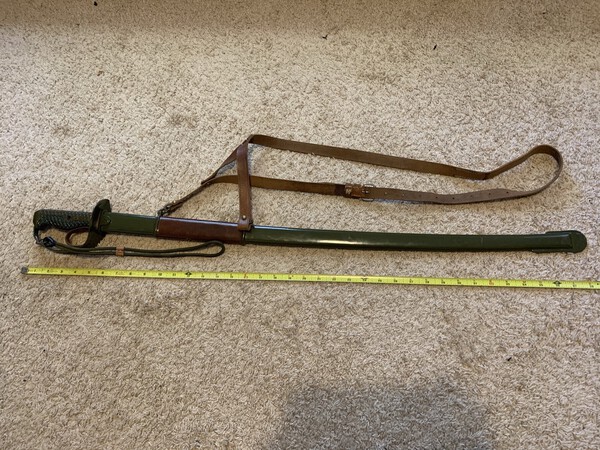
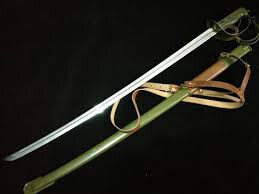
.jpeg.7f488bc5eb42f33079232f61c1802174.jpeg)
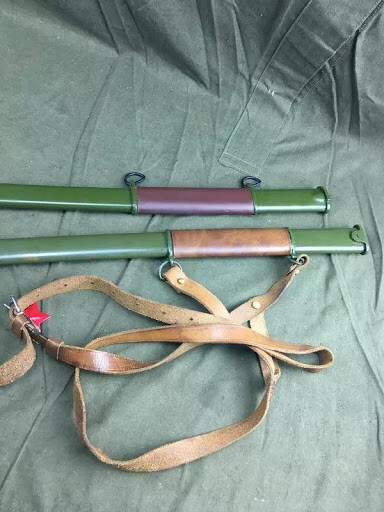





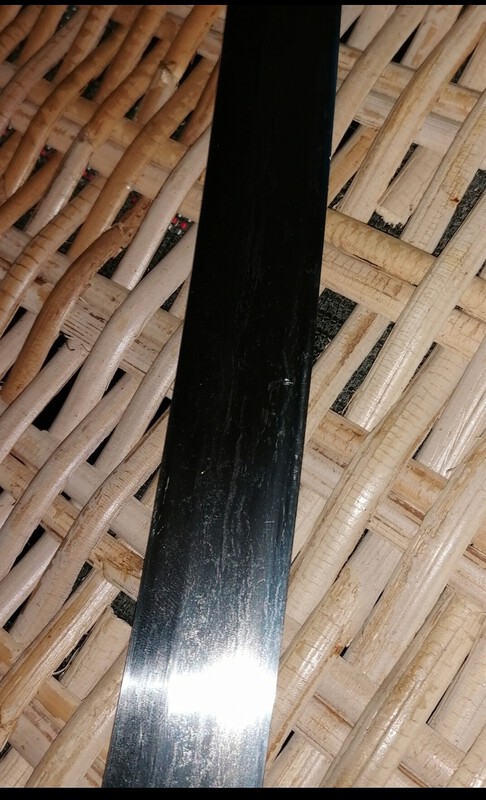
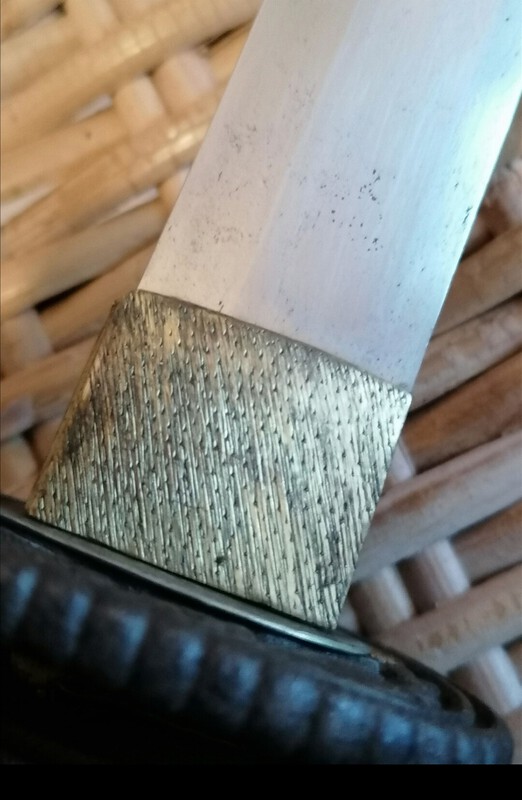




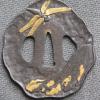

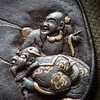
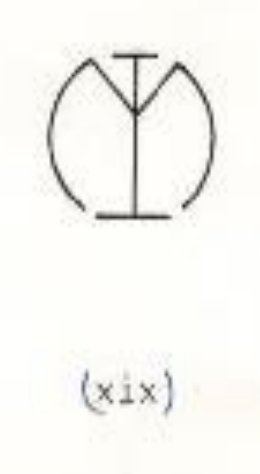

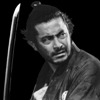



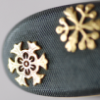







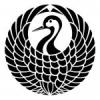

.thumb.jpg.355dc934f1adac580ad80679e8debf52.jpg)
